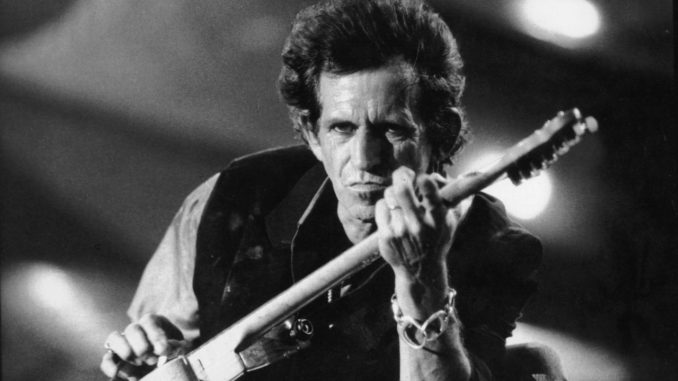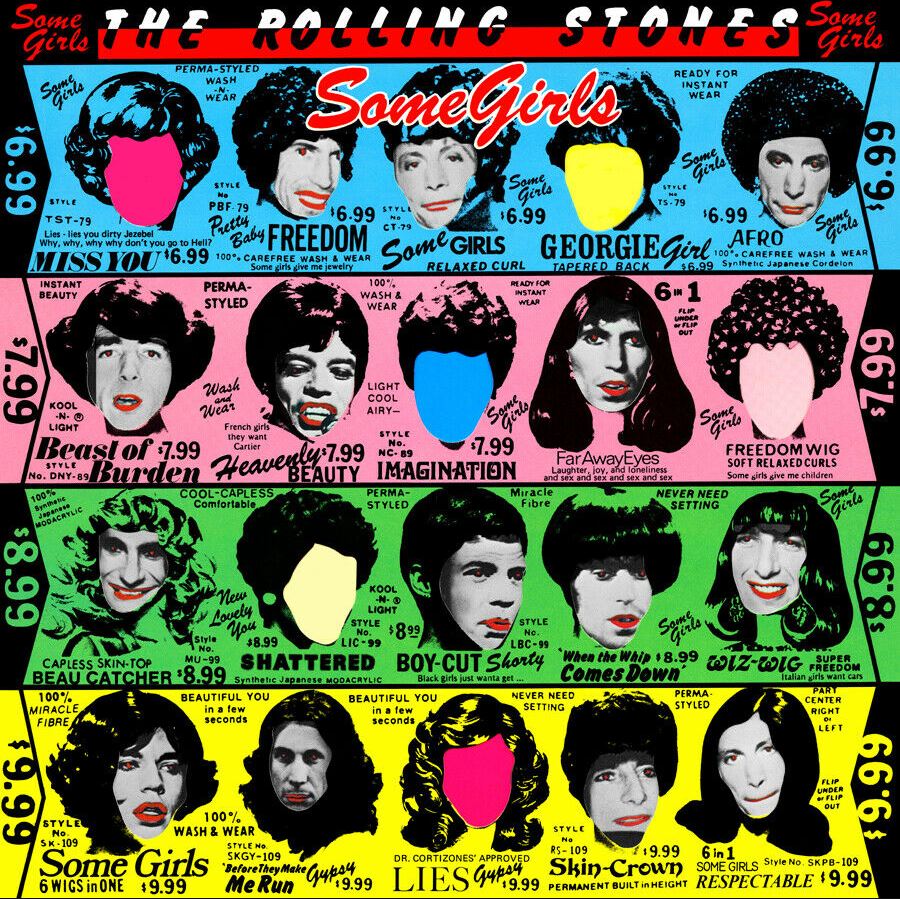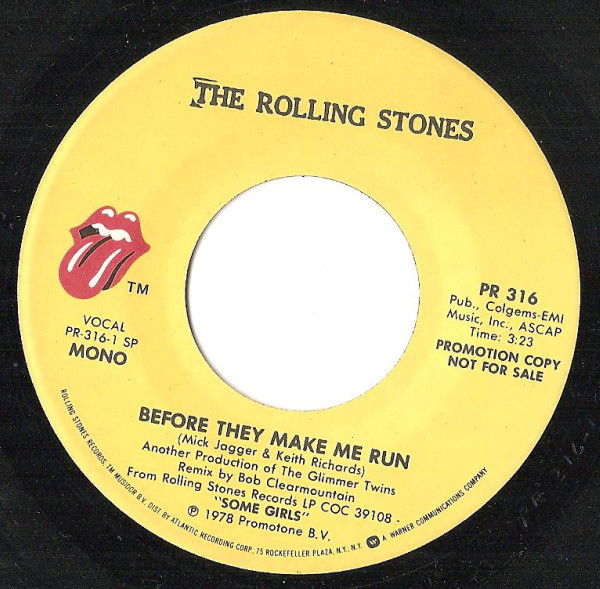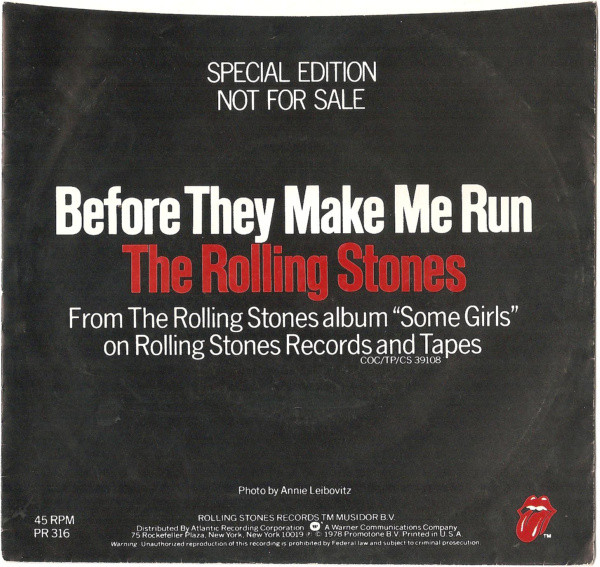
On 27 February 1977, Keith Richards was arrested at the Harbour Castle Hilton Hotel in Toronto. They Royal Canadian Mounted Police found such amounts of heroin in his room that they charged him with “possession of heroin for the purpose of trafficking” – an offence that at the time could result in prison sentences of seven years to life under the Narcotic Control Act.
His passport was confiscated, and Richards and his family remained in Toronto until 1 April, when Richards was allowed to enter the United States on a medical visa for treatment of heroin addiction.
For the next year and a half, Richards lived under threat of criminal sanction. Having this hanging over your head for that long is tough, and Richards coped by focusing on the Stones. A new album was overdue, and was thought to be a good and welcome distraction.
Richards was tried in October 1978, pleading guilty to possession of heroin. The larger drug trafficking charge had by that time been dropped. He was given a suspended sentence and put on probation for one year, with orders to continue treatment for heroin addiction and to perform a benefit concert on behalf of the Canadian National Institute for the Blind after a blind fan testified on his behalf. An incredible outcome, given what he potentially was looking at.
Richards had sought medical treatment for heroin addiction following his arrest in Toronto, and his resolution to overcome his addiction would be a significant factor in his trial. He did eventually kick the habit, but not until after the recording of Some Girls. This would be his last album while on heroin.

Some Girls is often referred to as the band’s final masterpiece. There are varying degrees of greatness on pretty much all of the latter-day Stones albums, but Some Girls may indeed have a larger amount of them.
The band was under a lot of pressure to deliver on this album. It almost sounds a bit silly now, but it was seen as a make or break moment for them. Many had begun to write them off and thought they had nothing left in the tank. There had, truth to be told, been a bit of a downward spiral in album quality since the peak that was Exile On Main Street in 1972. There were numerous dark clouds hanging over them at the time, especially Richard, who was seen as down and out following his heroin arrest. Mick was seen more as a celebrity than a musician. The old guard had been usurped by punk and the new wave of bands, making bands like the Stones less relevant. The Stones were at this point decidedly seen as ‘old hat.’
Mick Jagger, speaking with Rolling Stone Magazine in 1995, put the band’s prior creative lull down to one thing. “Everyone was using drugs, Keith particularly. So I think [that period] suffered a bit from all that. General malaise. I think we got a bit carried away with our own popularity and so on. It was a bit of a holiday period. I mean, we cared, but we didn’t care as much as we had. Not really concentrating on the creative process.”
For the new record, they would have to get their head in the game. They needed to step up, and that’s exactly what they did. Some Girls was a roaring success, one that firmly silenced their critics. However, the recording of the album was anything but a dream with Richards’ drug addiction especially putting a blight on the whole process.
With Keith’s drug charges pending, Mick Jagger took a lot of control on the album, but there was one song that was pretty much all Keith.
Before They Make Me Run was Richard’s way of exorcising a lot of the mental baggage that he was carrying around related to his arrest and upcoming court case. He put everything into the recording of the song. Even though it contained the usual Jagger/Richards credit, Jagger had nothing to do with writing it. On the other hand, there were definitely Jagger/Richards songs on the album with a lesser degree of Richards input as well.
Richards speaks of the song in his autobiography Life (2010): “For sheer longevity – for long distance – there is no track that I know of like Before They Make Me Run. That song, which I sang on that record, was a cry from the heart. […] It came out of what I had been going through and was still going through with the Canadians. I was telling them what to do. Let me walk out of this goddamn case. When you get a lenient sentence, they say, oh, they let him walk.”
The lyrics are a strikingly open plea to the Canadian authorities to go easy in his drug case, giving one of his heroically raw vocal performances a sense of unguarded personal urgency.
The track was originally titled Rotten Roll, but that was always a placeholder title. As the final lyrics fell into place, so did the title of the song.
After all is said and done
Gotta move while it’s still fun
Let me walk before they make me run
After all is said and done
I gotta move, it’s still fun
I’m gonna walk before they make me run
Everybody were not convinced that the song would be good enough to make the cut for the album. Richards remembers comments like “Why do you keep nagging that song? Nobody likes it.” His response? “Wait till it’s finished!”
In addition to being about his own ongoing trials and tribulations, Richards has revealed that the song includes memories of his good friend Gram Parsons.
Booze and pills and powders, you can choose your medicine
Well it’s another goodbye to another good friend
Parsons had been a member of The Byrds. He was enjoying a successful solo career when he died in 1973 from an overdose of alcohol and morphine. He was 26. It was a continual reminder to Richards of how he would end up himself if he did not kick the habit. The ‘goodbye’ part hides a double meaning. For a long time, the ‘medicine’ in the verse was also thought of as a good friend. He was now showing his determination to say goodbye to that as well.

The story of the recording of the song is the stuff of legends. It was recorded in one single five day session. We are talking around-the-clock days here, without sleeping, making it the longest single song session in Stones history. This happened in a Paris studio in March 1978, during one of Mick Jagger’s absences from the Some Girls sessions.
Richards spoke of the marathon sessions in his autobiography: “[The song] burned up the personnel like no other. I was in the studio, without leaving, for five days. Five days without a wing of sleep. I had an engineer called Dave Jordan and I had another engineer, and one of them would flop under the desk and have a few hours’ kip and I’d put the other one in and keep going. We all had black eyes by the time it was finished.”
The song seems fairly straightforward. Its tempo has a wired energy, and the hammer-on open-G riff is a Richards staple. One can wonder what it is about the song that made it require such a marathon session to get it done.
“I don’t know what was so difficult about it”, Richard wrote in his autobiography. “It just wasn’t quite right. But then you get guys that’ll hang with you. You’ll be standing there with a guitar round your neck and everybody else is conked out on the floor. ‘Oh no, not another take, Keith, please.’ People brought in food, pain au chocolat. Days turned into nights. But you can’t leave it. It’s almost there. You’re tasting it, it’s just not in your mouth. It’s like fried bacon and onion, but you haven’t eaten it yet, it just smells good.”
Watched the taillights fading, there ain’t a dry eye in the house
They’re laughing and singing
Started dancing and drinking as I left town
Gonna find my way to heaven, `cause I did my time in hell
I wasn’t looking too good but I was feeling real well
Richards: “When you get into it that much, you can lose the drive of it, but if you know it’s there, it’s there. It’s manic, but it’s like the holy grail. Once you’re in, you’re going for it. Because there’s no turning back, really. You’ve got to come out with something. And eventually you get there.”
Richards was heavily invested in the song, performing lead vocals (double-tracked to make them stand out), several acoustic and electric guitars, and bass. From how the song is described by himself and others, you almost get the feeling that no other Stones were allowed in the sessions, but that’s not the case. Charlie Watts is as always the drummer. Ronnie Wood plays the pedal steel part and slide guitar. Woody and Jagger also added backing vocals.
Summing up the sessions, Richards said “That’s probably the longest [recording session] I’ve done. There have been others that were close – Can’t Be Seen was one – but Before They Make Me Run was the marathon.”
Five days (and nights) in the studio sounds like a walk in the park compared to Richards’ record for going without sleep in general. “Nine days without a wink,” he said. “I fell asleep standing up, eventually… I was just putting another cassette back on the shelf, and I was feeling great. Then I turned ’round and fell asleep, falling against the edge of the speaker. Woke up in a pool of blood, wondering, ‘Is that claret?’”

Before They Make Me Run was one of the ten tracks selected for the Some Girls album when it was released on 9 June 1978. They had recorded quite a few songs during their studio sessions. Some were used on the following albums, some were used as single b-sides, and a whole extra CD’s worth of material lay around unreleased until they were added to a Some Girls deluxe edition and box set in 2011. With three times the needed material to choose from, only the best would go on the album, and Before They Make Me Run definitely fits that bill. A special promo single of the song was even pressed and distributed to radio stations, although it did not become a conventional single.
The song wasn’t an instant addition to the Rolling Stones concert repertoire. Richards first performed Before They Make Me Run live with the New Barbarians in 1979. (New Barbarians was a Ron Wood solo band put together to promote his solo release.) It was not until the Steel Wheels Tour in 1989 that the Stones started performing it.
Much like Happy, the song has become a signature tune for Richards with performances on most Rolling Stones tours since 1989 as well as his solo tours with the X-pensive Winos.

Facebook Comments